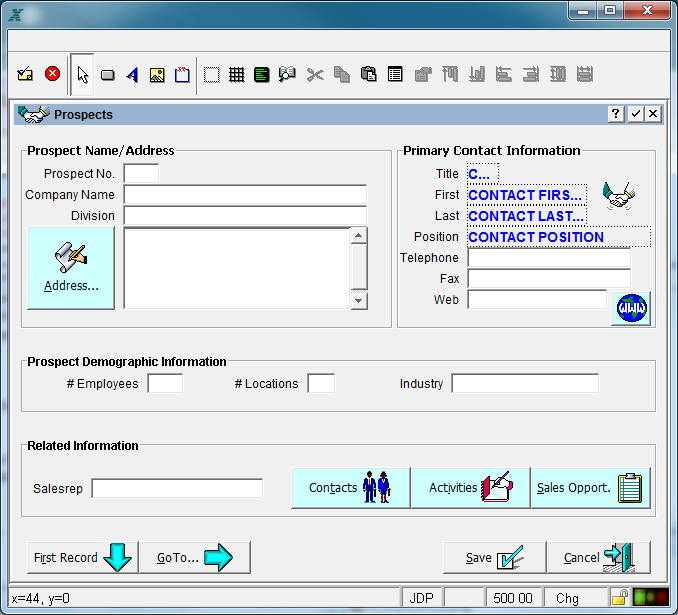Chapter 3-1: Overview of APPX Processes |
Images An image is a designer-painted format that presents information and options to a user, or retrieves information and option requests from a user. Menu, input, inquiry, and output processes all utilize images. An example of an input image is shown below.
An APPX Input Process Image Images consist of four primary components: Items,which are individual appearances of a field from the data dictionary, as painted on an image. An item's appearance is affected by the specifications you enter in the dictionary, the display characteristics you define when the item is painted, and any graphical attributes assigned to the item. Text consists of descriptions and identifying labels that are added to an image. Option names on menus, and column headings and field labels on input screens, are examples of background text. Characteristics are specifications that correspond to display attributes for items and text. Characteristics such as underlining apply to both screen displays and hard copy output. Other characteristics such as inverse/normal presentation, blinking, and bright/dim controls apply only to a screen image. Graphical attributes are components such as wallpapers, titlebars, menu bar items, toolbar items, icons, and other features that are not part of the actual "image" you paint. These are applicable only if you are using the APPX Client for a GUI-enabled environment. Alternate Images: An image may be the only image for a frame, or one of a number of alternate images. An alternate image is one of a group of mutually exclusive images, the display of which is dependent upon the number that is assigned to the image and the value in the predefined field ALTERNATE IMAGE NUMBER. For example, you might create a customer input process that requires a user to complete specifications on two screens. The first screen contains basic customer information, including a customer type field that indicates whether a customer is domestic or international. Since different information is needed for the two types of customers, the image presented on the second screen depends upon the customer type entry. In other words, the frame definition for the first screen has only one image whereas the frame definition for the second screen has two alternate images (one domestic and one international), with image selection based upon the value in the customer type field. |
Application Design Manual "Powered by Appx Software"1064 ©2006 By APPX Software, Inc. All Rights Reserved |
